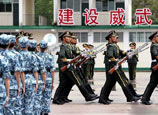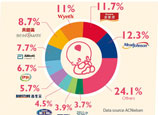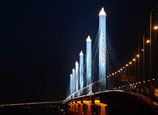
From Chen Hui, deputy director general of the Xi’an Hi-Tech Zone administrative committee:
Xi’an is a city of 8.5 million, or more than 20 percent of the population of Shaanxi province. Neither figure is special in China. There are larger cities and larger provinces.
But as the most robust part of the city’s modern economy, our XHTZ has created 300,000 jobs in technology industries and related services. This places us among the leading new industrial zones in the country. even comparable with the industrial zones in coastal cities.
I heard foreign investors complain about how hard it was to do business in China’s interior provinces, and I heard them say investors can only lose their shirt. But let them come to Xi’an. I can show them how we’ve signed up Fortune 500 companies each year .15 of them in 2011, and 11 in 2012. Of those, Samsung is the largest. We signed the investment agreement in April 2012. The construction work for Samsung’s phase one is scheduled to be completed in November this year, followed by the start of the production line a month later.
To deliver that speed, the XHTZ set up a special committee like a joint command based next to the worksite. Top leaders of the (XHTZ) administrative committee work from there in rotation so the joint command responds to any request from the worksite any time.
I’m sure that more investors will come to XHTZ, following Samsung’s footsteps. Technology industries add value throughout the value chain and they can do a lot of that in Xi’an.
But being able to serve Samsung is not the only thing we’re good at. It is perhaps a bigger challenge to serve more than 7,000 companies at one time, and to assist up to 2,000 companies in their legal registration matters in one year.
Nothing demonstrates better the interdepartmental teamwork among the different authorities than the XHTZ government affairs center that occupies the second and third floor of the XHTZ administrative committee’s office building.
Our GAC is a joint office for representatives from various authorities to help companies avoid the hassle of processing the same documents and applying for the same approval in different offices and different times. On a normal day, the GAC will process around 6,000 company requests.
And we know nothing is perfect. We’ll continue to simplify and optimize the GAC procedures so that all enterprises in XHTZ, especially privately owned small enterprises, encounter as little interference as possible.
Maybe, if we had decided to chase labor-intensive industries, we could have grown more rapidly in our earlier years. But by now we would have a hard time trying to change our model of development.
We sensed that going labor intensive wasn’t quite right then. I am glad we made the right choice that our focus would be to tap the potential of our talent pool. Now the XHTZ is more than four times the size of the old Xi’an city (built inMing dynasty 600 years ago) and is still growing along the lines that we’ve chosen. So the way I see 2013 is that it’s a year of a still greater change, or still greater development. Between 1997 and ’98, when I was still an English teacher, I used to spend weekends catching fish here where we sit right now. Now you see the change. What a difference. And I still don’t see an end to it.
















 2nd cross-sea bridge spanning across Hangzhou Bay to open
2nd cross-sea bridge spanning across Hangzhou Bay to open


![]()
